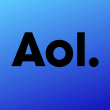Introduction
Dating apps remain one of the highest-value consumer categories in mobile. Building a niche dating app for the LGBTQ community modeled after market leaders like Grindr requires thoughtful product design, robust privacy and moderation systems, and scalable engineering. One of the first questions founders and product owners ask is: how much will it cost? This article breaks down the real cost drivers, feature sets, technology choices, and partner options so you can estimate a realistic budget and choose the right dating app development company or app development company in USA for the job.
What influences cost: product scope vs. complexity
Before numbers, understand that cost isn’t a single line item. It’s the sum of product scope, technical complexity, design quality, integrations, and post-launch support.
Major cost drivers:
- Core features: chat, profiles, geolocation, discovery feeds, filters, push notifications.
- Privacy & safety: encryption, reporting, human moderation, content filtering.
- Scalability: real-time messaging servers, CDNs, horizontal scaling.
- Compliance: data protection (GDPR, CCPA), age verification, legal reviews.
- Design & UX: onboarding flow, accessibility, inclusive UI/UX.
- Platform choice: native iOS + Android vs cross-platform (React Native / Flutter).
- Team location: US-based teams cost more; offshore or hybrid models lower hourly rates.
- Time to market: faster delivery (sprints, larger teams) increases short-term cost.
Typical features of an LGBTQ dating app (MVP → Full product)
1. Minimum Viable Product (MVP) features (must-have):
- User registration (email/phone + social sign-on)
- Profile creation (photos, pronouns, bio, interests)
- Location-based discovery / map view
- One-to-one chat with media & read receipts
- Basic filters (age, distance, interests)
- Push notifications & device permissions
- Reporting/blocking & safety tips
- Admin panel (user moderation, analytics)
2. Advanced / premium features (raise cost significantly):
- Real-time presence indicators, typing, delivery receipts
- Live streaming or video calls (peer-to-peer or SFU)
- Advanced matching algorithms and ML recommendations
- Super likes, boosts, paid visibility, subscriptions
- Events & community spaces (group chat, forums)
- Safety features: covert modes, verification badges, emergency contacts
- Third-party integrations: payment gateways, identity verification, analytics, ad networks
- Localization and multi-language support
Rough cost breakdown (estimates)
Below are ballpark ranges for building an LGBTQ dating app like Grindr. Prices vary widely by region and partner. These estimates assume a professional dating app development company or app development company in USA with experience in consumer mobile apps.
1. MVP (iOS + Android + Backend + Admin + Basic QA)
- Design (UX + UI for mobile & admin): $8,000 – $20,000
- Frontend mobile (React Native or native iOS + Android): $25,000 – $70,000
- Backend (APIs, auth, real-time messaging, DB): $20,000 – $60,000
- Admin panel & moderation tools: $8,000 – $20,000
- QA & testing: $6,000 – $15,000
- DevOps & initial cloud infra (AWS/GCP/Azure): $4,000 – $12,000
- Estimated total MVP: $71,000 – $197,000
2. Full product (advanced features, ML, video, heavy scale)
- Advanced messaging & video (WebRTC, SFU): $30,000 – $100,000
- Machine learning / recommendations: $20,000 – $75,000
- Identity & age verification integrations: $8,000 – $25,000
- Payments & subscription management: $6,000 – $20,000
- Advanced analytics & A/B testing: $6,000 – $20,000
- Security audit & compliance work: $6,000 – $25,000
- Ongoing maintenance (annual): 15–25% of build cost/year
- Estimated full product: $200,000 – $600,000+
Notes:
- U.S. agency rates are premium; an app development company in USA will be at the higher end of these ranges.
- Offshore or hybrid teams can reduce cost 30–60%, but require stronger project management.
- Real-time and media (video/voice) are the most expensive components due to bandwidth, backend complexity, and testing.
Tech stack options and their cost impacts
1. Native (Swift + Kotlin)
- Pros: best performance, native UX, easier to implement advanced OS features.
- Cons: double development effort for iOS + Android (higher cost).
2. Cross-platform (React Native / Flutter)
- Pros: single codebase, faster time to market, lower cost.
- Cons: occasional native bridges required for complex features (WebRTC, AR).
3. Realtime messaging
- Build using: WebSockets, Socket.IO, or managed services like Pusher/Ably.
- For scale: consider XMPP servers, MQTT, or custom real-time architectures with Redis pub/sub.
4. Video & calls
- Use managed platforms such as Twilio, Agora, or Daily for faster integration (higher per-minute costs).
- Or build custom WebRTC SFU for cost efficiency at scale but higher engineering cost.
5. Database & infra
- Relational DB (Postgres) + NoSQL (Redis/Cassandra) for sessions and presence.
- Use Kubernetes for scalability; CDNs for media; object storage for images.
Managed services speed up development but add recurring costs (messaging, CDN, video minutes).
Privacy, safety, and moderation (non-negotiable)
For an LGBTQ dating app, trust and safety are crucial:
- End-to-end encryption for private messages (or strong transport encryption).
- Content moderation: automated filters (image/text), manual review workflows, and rapid takedown systems.
- Reporting & blocking: easy UX for reporting abuse; clear policy enforcement.
- Anonymous/Incognito modes for user safety.
- Verified profiles to reduce catfishing.
- Data residency & compliance: consider where user data is stored; GDPR, CCPA, and local laws.
- Implementing these adds development time and cost but is essential for product credibility.
Monetization strategies (affects product design & cost)
Monetization choices impact development complexity and cost:
- Freemium subscriptions (recurring revenue): implement in-app purchases (Apple/Google) and web subscriptions.
- Microtransactions: boosts, coins, premium filters.
- Ad monetization: native ads, programmatic — careful with user experience and privacy.
- Events & creators: paid events or premium community features.
Subscription flow and payment processing introduce additional QA, security, and compliance work.
Timeframe: realistic timelines by scope
- MVP (basic features): 4–6 months with a focused team (PM, 2 devs, designer, QA).
- Enhanced app (messaging + payments + verification): 6–10 months.
- Full product with video + ML + scale: 10–18+ months.
Faster delivery requires larger teams, which increases cost but reduces time to market.
Choosing the right partner: agency vs in-house vs freelancers
1. Dating app development company (specialist)
- Pros: domain experience (privacy, moderation, engagement UX), faster launch, product strategy.
- Cons: higher cost. Best for founders who want proven delivery and product guidance.
2. App development company in USA
- Pros: proximity to VC networks, US market expertise, higher quality assurance, easier collaboration in US timezones.
- Cons: premium hourly rates; good option if targeting US users.
3. Hybrid model (US product + offshore engineering)
- Product & UX led by US team; heavy engineering delivered offshore. This balances quality and cost.
4. Freelancers
- Lower upfront cost but higher project risk for complex systems (security, scale).
Post-launch: operations and growth costs
Launch is only the beginning:
- Cloud hosting & bandwidth can be significant (media heavy). Budget for monthly infrastructure.
- Moderation team (human reviewers, trust & safety) is an ongoing expense.
- Marketing & user acquisition: CPA for dating apps varies widely; factor this into your go-to-market budget.
- Product iterations: collect feedback and plan continuous feature development.
Expect monthly operating costs (infrastructure + ops + ads) of several thousand to tens of thousands depending on scale.
Final Recommendations
- Start with a focused MVP that prioritizes safety, onboarding, core messaging, and discovery. Proof demand before building complex features.
- Work with a specialist dating app development company if you can — their experience with trust & safety and user behavior is invaluable.
- Consider hybrid resourcing: product & design in the US (if targeting US users) and engineering offshore to control costs.
- Plan for scale & safety from day one—adding encryption or moderation later is costly and risky.
- Budget realistically: MVP ~$70k–$200k; full product $200k–$600k+. Ongoing costs for ops and growth are separate and can be substantial.
If you’re targeting the North American market, working with an app development company in USA for product strategy and compliance while leveraging offshore engineering for build can be an effective approach.
Conclusion
Building an LGBTQ dating app like Grindr is a meaningful, high-impact undertaking that requires careful attention to product design, user safety, and technical architecture. Costs vary based on scope, team choice, and speed to market, but with the right partner—a seasoned dating app development company you can deliver a secure, engaging product that respects privacy and serves community needs. Plan your MVP, lock down trust & safety features early, and budget for growth and moderation to ensure long-term success.












